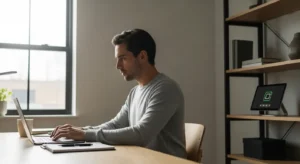
Do you ever feel a phantom buzz in your pocket, even when your phone isn’t there? Or perhaps you find yourself reaching for your device without a reason, only to get lost in a scroll that leaves you feeling more drained than relaxed? You’re not alone. In our hyper-connected world, the very tools designed to streamline our lives often become the source of our greatest stress. This pervasive feeling has a name: digital burnout.
It’s that distinct sense of exhaustion, a mental fog that descends after hours spent staring at screens, juggling notifications, and navigating the endless streams of information. It’s the feeling of being perpetually “on,” with your brain’s resources stretched thin by a constant barrage of digital demands. The cost of this distraction isn’t just lost time; it’s a toll on our mental clarity, our ability to focus deeply, and even our overall well-being.
But the solution isn’t to throw your smartphone in a river and move off the grid. Technology is a deeply integrated part of modern life, essential for work, connection, and even entertainment. The goal isn’t digital abstinence; it’s digital balance. It’s about understanding the science of why we get so hooked and then building intentional, realistic boundaries that allow you to control your tech, not the other way around.
In this guide, we’ll explore the science behind tech fatigue and provide you with actionable, sustainable strategies to reclaim your focus and energy. We’ll move beyond simple tips like “use your phone less” and dive into creating systems and environments that support a healthier relationship with your digital world. This is your roadmap to preventing digital burnout while still thriving in a connected age.
📚 Table of Contents
- What is Digital Burnout, Really?
- The Attention Economy: How Our Brains Get Hooked
- Building Your Digital Fortress: Proactive Routines
- Curating Your Physical Environment for Digital Wellness
- Establishing Screen-Free Zones and Times
- The Science of Sleep and Screens
- Creating Cues for Deep Work
- Putting It Into Practice: Two Simple Scenarios
- Navigating the Challenges: Troubleshooting Your Journey
- Frequently Asked Questions About Digital Burnout
- How do I manage digital burnout when my job requires me to be online constantly?
- Are parental controls a good way to prevent tech fatigue in children and teens?
- I work night shifts. How can I manage blue light and digital wellness around an unconventional schedule?
- What about privacy concerns with apps designed to track screen time?
- Your First Steps Toward a Healthier Tech Life

What is Digital Burnout, Really?
Before we can address the problem, we need to understand it. The term “burnout” is often associated with high-pressure work environments, but its principles apply perfectly to our digital lives. Digital burnout, sometimes called tech burnout or tech fatigue, is a state of mental and emotional exhaustion caused by prolonged and excessive use of digital technology.
It’s more than just feeling tired of screens. It is a specific syndrome characterized by three key dimensions: overwhelming exhaustion, feelings of cynicism and detachment from your digital life, and a sense of ineffectiveness or lack of accomplishment. It’s the difference between ending a long video call feeling tired and ending it feeling utterly depleted and irritable for the rest of the day.
Understanding the common digital burnout symptoms is the first step toward recognizing it in yourself. These often manifest both mentally and physically.
Mentally, you might experience brain fog, difficulty concentrating on a single task, increased irritability or anxiety, and a feeling of being emotionally numb. You may find yourself mindlessly scrolling through social media feeds but feeling no joy or connection, only a vague sense of obligation or dread. The productivity tools meant to help you feel on top of your game suddenly feel like another source of pressure.
Physically, the symptoms can include tension headaches, eye strain from staring at screens, insomnia or poor sleep quality, and even neck and shoulder pain from poor posture while using devices. That persistent, low-grade headache at the end of a workday? It could very well be a sign of tech fatigue.
This condition isn’t just a pop-culture buzzword; it’s rooted in established psychological principles. The World Health Organization recognizes burnout as an occupational phenomenon, and the psychological stressors are remarkably similar. The constant notifications, the pressure to be always available, and the endless sea of information create a cognitive load that our brains were not evolved to handle. For more information on general mental health and stress, the American Psychological Association (APA) is a valuable resource.
Recognizing these digital burnout symptoms is empowering. It shifts the narrative from a personal failing (“Why can’t I focus?”) to a systemic issue (“How is my digital environment affecting my focus?”). Once you can name the problem, you can begin to solve it.

The Attention Economy: How Our Brains Get Hooked
To understand how to avoid digital burnout, we must first understand why it’s so hard to look away from our screens in the first place. It’s not a lack of willpower. Our devices and the apps on them are designed by some of the brightest minds in the world, whose primary goal is to capture and hold our attention for as long as possible. This is the foundation of the “attention economy,” where your focus is the product being sold.
This process relies on some fundamental principles of human psychology, primarily centered around a powerful neurotransmitter in our brains: dopamine.

The Dopamine Loop Explained
You’ve likely heard of dopamine, often called the “pleasure chemical.” But its role is more nuanced. Dopamine is more accurately associated with anticipation and motivation. It’s the chemical that drives you to seek out rewards. A dopamine loop is a cycle where your brain is conditioned to seek a reward, receives it, and is then driven to seek it again.
Think of a slot machine. The unpredictable nature of the payout—the possibility that the *next* pull could be the jackpot—is what makes it so compelling. Our digital devices work in the same way, offering what’s known as “variable rewards.”
Every time you pull down to refresh your email or social media feed, you’re pulling the lever on a digital slot machine. You don’t know what you’ll get. It could be a stressful work email, a mundane update, or—just maybe—a delightful message from a friend, an exciting piece of news, or a “like” on your latest post. That unpredictability is the key. The anticipation of a potential reward releases a hit of dopamine, motivating you to check again, and again, and again. This is the core mechanism behind the urge to constantly check your phone.
This loop is why a notification icon—a small red circle with a number—can feel so irresistibly urgent. It’s a manufactured cue signaling a potential reward, and our brains are hardwired to respond. Research supported by institutions like the National Institutes of Health (NIH) continues to explore these neural pathways, confirming how deeply these digital patterns can affect our brain chemistry.
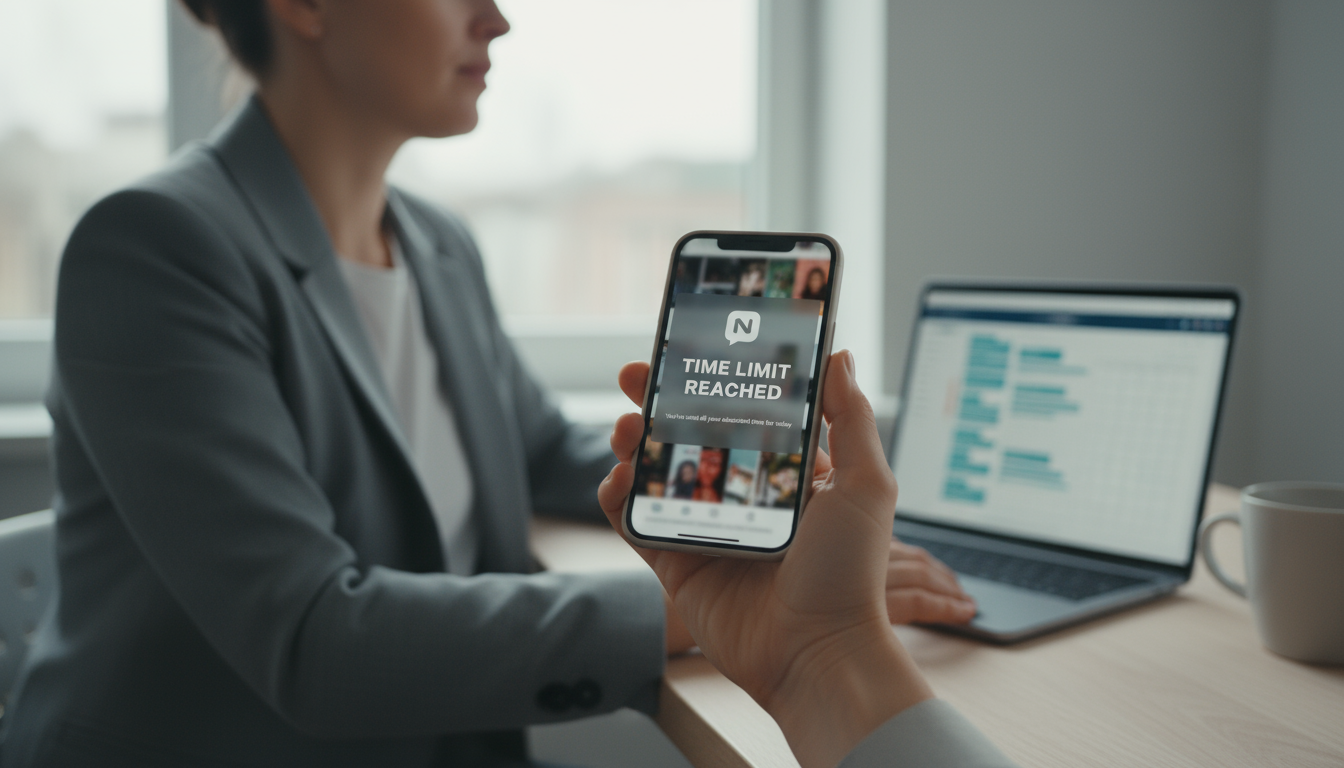
Cognitive Overload and Decision Fatigue
Beyond the dopamine loop, digital burnout is also a product of simple cognitive overload. Your brain’s prefrontal cortex, which is responsible for executive functions like decision-making, planning, and focus, has a finite capacity. Every notification you see, every email you triage, every headline you skim, and every choice you make (to click, to ignore, to respond) chips away at this limited resource.
Throughout the day, you are forced to make thousands of micro-decisions. Should I open this notification? Is this email urgent? Do I need to reply to this text now? This leads to “decision fatigue,” a state where the sheer volume of choices depletes your mental energy, making it harder to concentrate on important tasks or make thoughtful decisions later in the day.
When you combine the constant pull of the dopamine loop with the steady drain of cognitive overload, you have a perfect recipe for digital burnout. Your brain is simultaneously over-stimulated by potential rewards and exhausted by constant processing. The first step in reclaiming your mind is to break these cycles by building intentional systems.
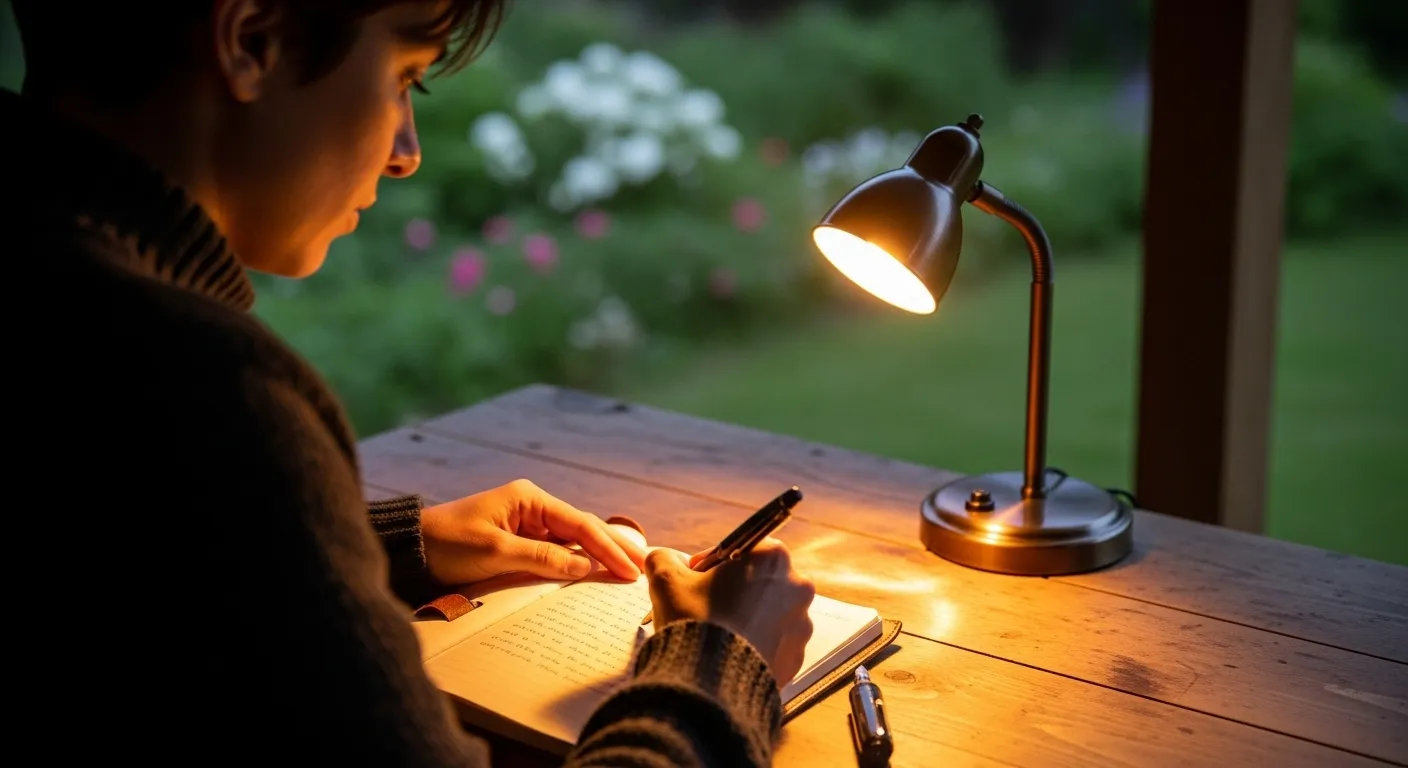
Building Your Digital Fortress: Proactive Routines
Knowing the science is one thing; putting it into practice is another. The key to combating digital burnout isn’t about fighting a constant battle of willpower. It’s about changing the battlefield. By creating proactive routines and redesigning your digital environment, you can reduce the number of temptations and decisions you have to make, preserving your mental energy for what truly matters.
Here are some of the most effective strategies for how to avoid digital burnout by building a more intentional relationship with your technology.

Mastering Your Notifications
Notifications are the primary entry point for distraction. Each buzz or ping is an external demand on your attention, pulling you out of your current task and forcing a context switch. The solution is to move from a reactive to a proactive notification system. This is where a technique called notification batching comes in.
Notification batching is the practice of checking your notifications at scheduled times rather than responding to them as they arrive. Instead of letting your phone dictate your attention, you decide when to engage. Turn off all non-essential notifications from apps—especially social media, news, and email. Allow only notifications from actual people that might be time-sensitive, such as phone calls or messages from a select few contacts.
Then, schedule two or three specific times during the day—say, 10 AM, 1 PM, and 4 PM—to open these apps and catch up. This transforms distraction into a planned, focused activity. Most smartphones now have a “Focus Mode” or “Do Not Disturb” (DND) feature that makes this easy to implement. You can configure it to allow calls from favorites while silencing everything else, creating a powerful shield for your attention.
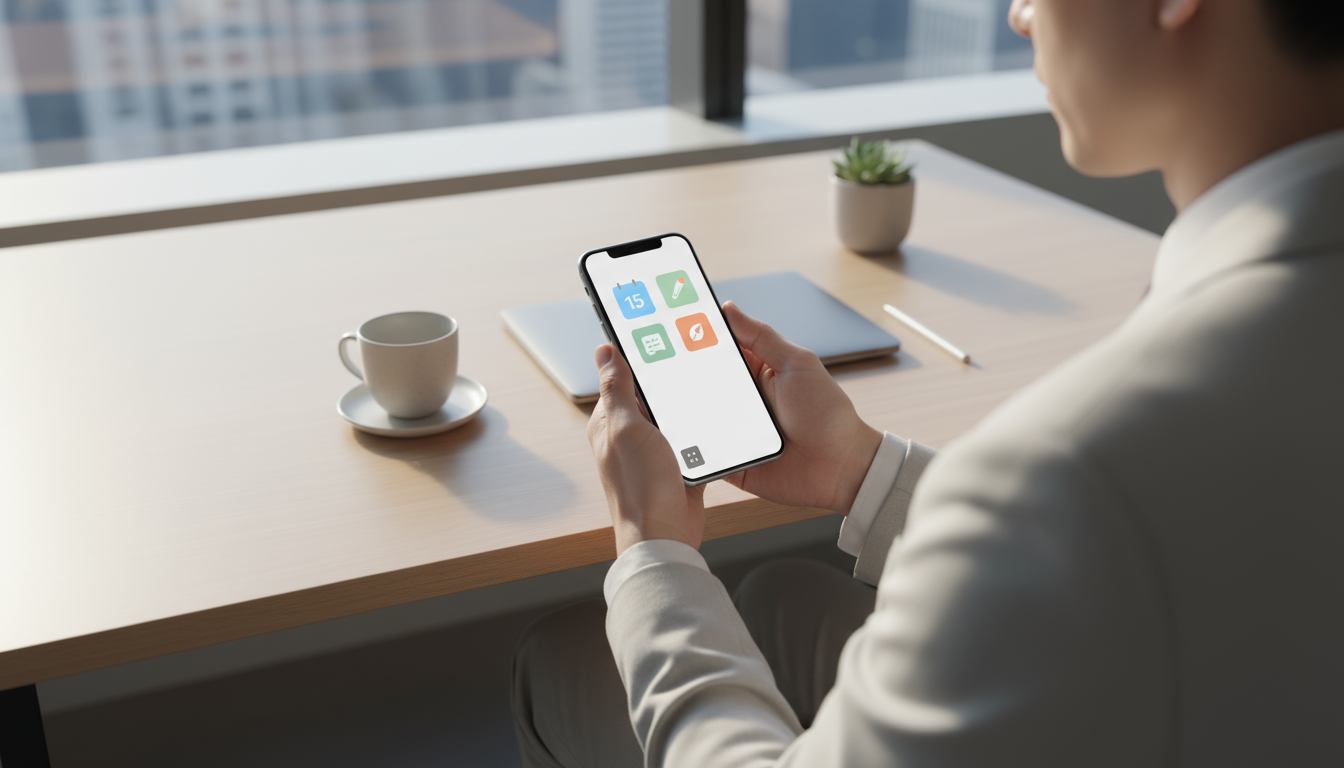
Designing a “Focus-First” Home Screen
Your phone’s home screen is prime real estate for your attention. If it’s cluttered with colorful, notification-badged apps, it becomes a minefield of potential distractions every time you unlock it. A “focus-first” home screen is designed for utility, not entertainment.
Start by removing all “infinite scroll” apps (social media, news) from your home screen. Move them into a folder on the second or third page, forcing you to consciously seek them out. Your home screen should contain only tool-based apps: your calendar, maps, notes, camera, or other utilities that serve a specific function and have a clear end point. This small change reduces the odds of unlocking your phone to check the weather and accidentally losing 20 minutes to Instagram.
For an even more powerful effect, consider switching your phone to grayscale mode. Removing the vibrant, reward-signaling colors makes the screen significantly less appealing to your brain, dampening the dopamine-driven urge to scroll.
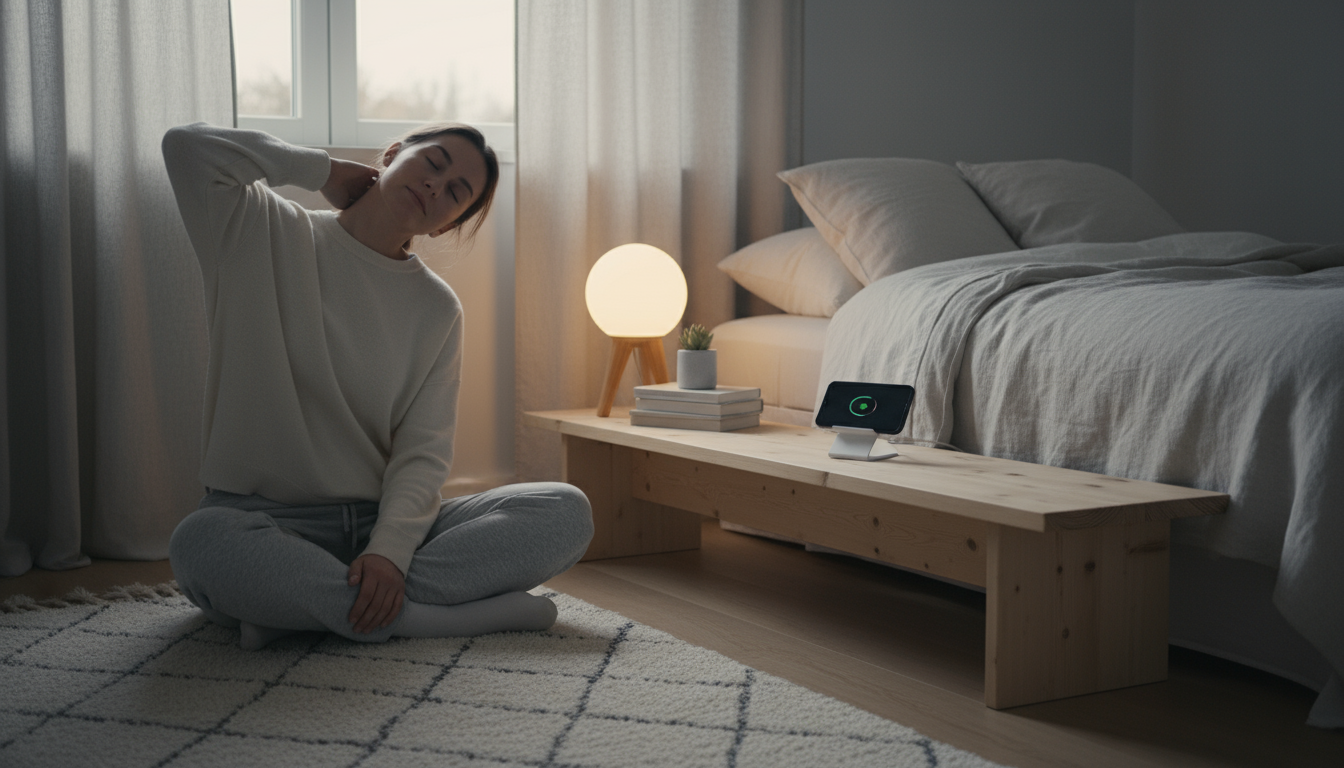
Using App Timers as Guardrails
Most modern smartphones have built-in features that allow you to set daily time limits for specific apps. This is not about punishing yourself; it’s about building awareness. You might not realize you spend 90 minutes a day on a single app until your phone tells you.
Set a reasonable limit for your most time-consuming apps—perhaps 20 or 30 minutes per day. When you hit the limit, the phone will notify you. You can often override it, but that extra step forces a moment of intention. It prompts the question: “Is this really how I want to be spending my time right now?” Often, that gentle nudge is all you need to close the app and redirect your focus to something more fulfilling.
By implementing these routines, you’re not just resisting distraction; you’re fundamentally redesigning your relationship with your devices. You’re creating an environment where focus is the default and distraction is a deliberate choice.

Curating Your Physical Environment for Digital Wellness
Your digital habits are not just shaped by what’s on your screen; they’re profoundly influenced by your physical surroundings. To truly manage tech fatigue, you need to extend your wellness strategies beyond your device and into your environment. Creating clear physical boundaries and cues can automatically guide you toward healthier behaviors, reducing the need for constant self-control.

Establishing Screen-Free Zones and Times
One of the most powerful ways to curb digital burnout is to designate specific areas and times where screens are simply not allowed. This creates a mental and physical sanctuary where your brain can rest and recharge without the constant hum of digital connectivity. The two most effective zones to establish are the bedroom and the dinner table.
The bedroom should be a space for rest and intimacy, not for scrolling. By making a rule that no phones enter the bedroom, you eliminate the temptation of late-night scrolling or checking emails first thing upon waking. Get a simple, old-fashioned alarm clock so your phone doesn’t have to be your wake-up call. This single change can have a dramatic impact on your sleep quality and morning focus.
Similarly, making the dinner table a screen-free zone allows for genuine connection with family or partners, or a moment of mindful solitude if you’re eating alone. It carves out protected time for human interaction, which is a powerful antidote to the isolating effects of digital overload.

The Science of Sleep and Screens
The link between screen time and poor sleep is well-documented, and it goes beyond the mental stimulation of the content you’re consuming. The culprit is blue light. Blue light is a type of light on the visible spectrum with a short wavelength, which is emitted in large amounts by the screens of our phones, tablets, and computers.
Exposure to blue light in the evening, particularly within two hours of bedtime, suppresses the production of melatonin, the hormone that regulates your sleep-wake cycle. Your brain interprets this light as daylight, which signals that it should stay awake and alert. As a result, you might find it harder to fall asleep, and the quality of your sleep may be diminished. The Sleep Foundation provides extensive resources on how light exposure impacts sleep health.
To combat this, create a “digital sunset.” This means putting away all screens at least 60-90 minutes before you plan to sleep. Use this time for analog activities: reading a physical book, listening to calming music, stretching, or talking with a loved one. This routine not only helps your brain produce melatonin naturally but also helps you mentally wind down from the day’s stresses.
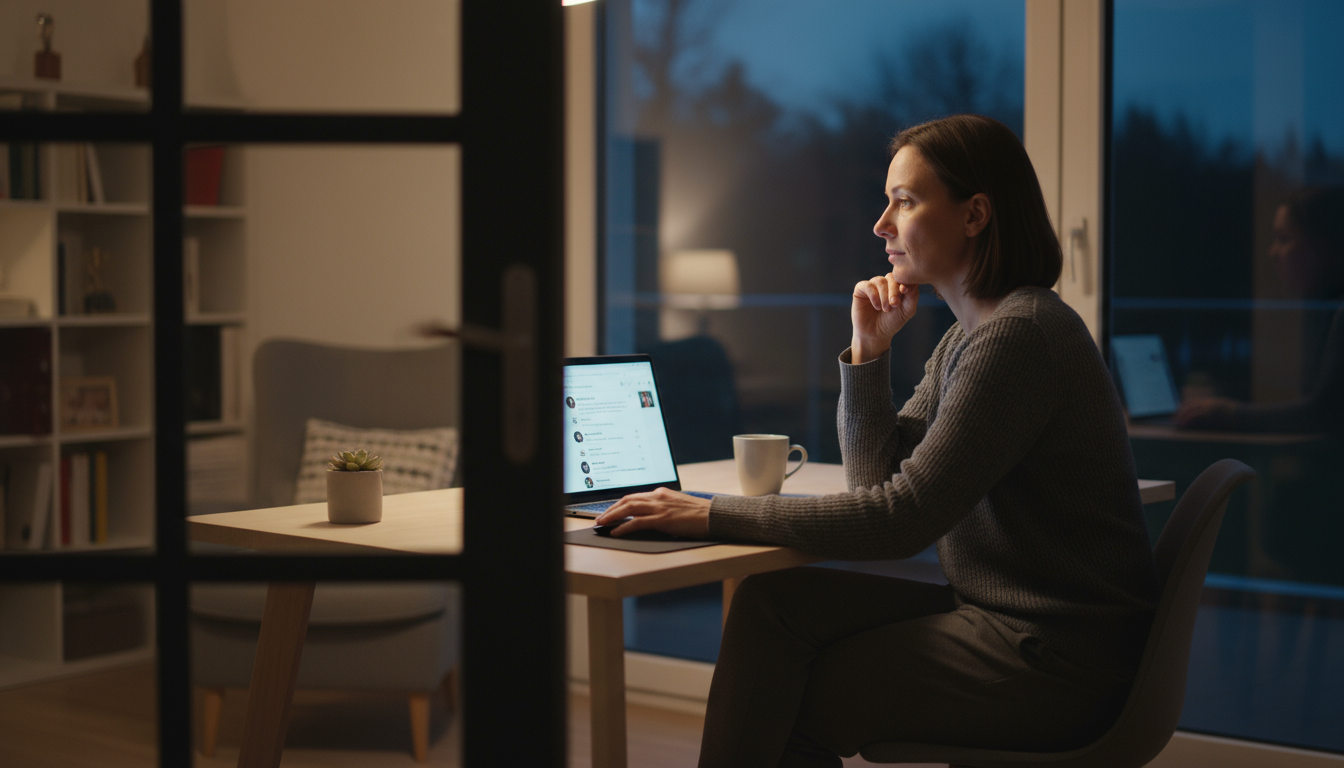
Creating Cues for Deep Work
Just as you can create cues for rest, you can also create them for focused work. Our brains are highly associative. If you consistently work in a specific environment, your brain will start to associate that space with focus. If possible, have a designated workspace, even if it’s just a particular corner of a room, that is used only for work.
You can enhance this effect with sensory cues. Perhaps you turn on a specific desk lamp only when you’re doing deep work. Or maybe you listen to a particular type of instrumental music. When you leave your phone in another room and activate these cues, you send a powerful signal to your brain that it’s time to concentrate, free from the digital distractions that lead to tech fatigue.
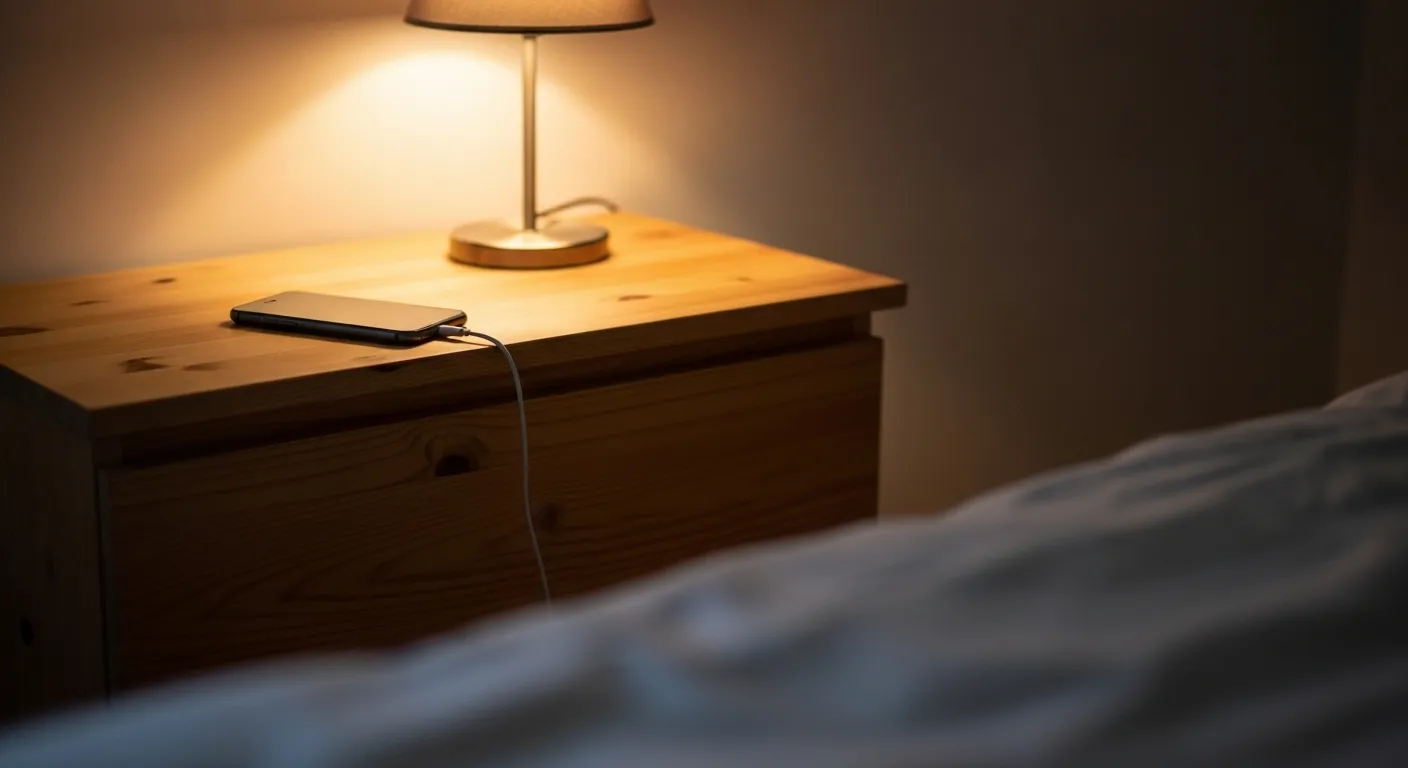
Putting It Into Practice: Two Simple Scenarios
Theory is important, but practical application is where real change happens. It can be overwhelming to try to implement everything at once. Instead, let’s look at two specific, manageable scenarios that you can adopt to start preventing digital burnout today. These examples are designed to be realistic, focusing on small, consistent actions that build momentum over time.
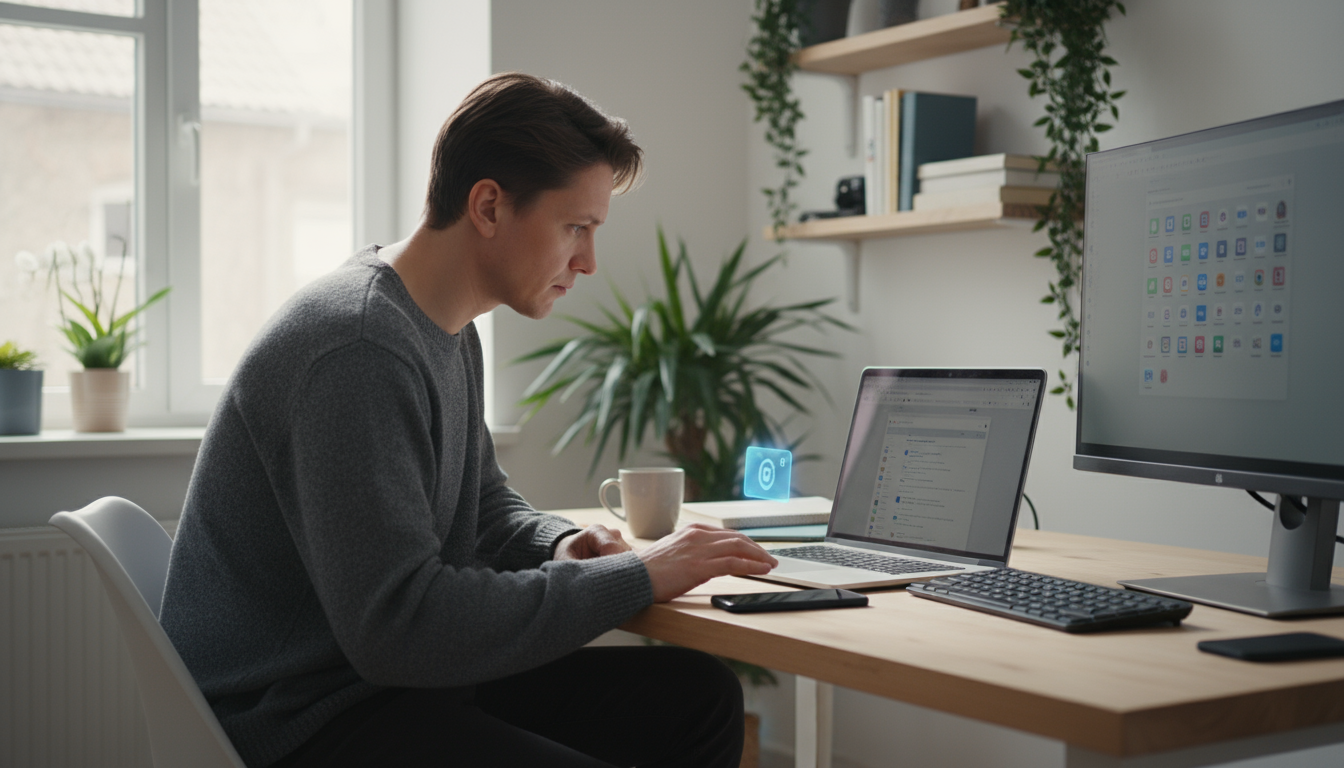
Your 10-Minute Evening Wind-Down
The goal of this routine is to replace pre-sleep scrolling with a calming, screen-free transition to rest. This helps improve sleep quality, a cornerstone of mental resilience against burnout. It’s simple, requires no special equipment, and takes only ten minutes.
Step 1 (Minute 0): One hour before your desired bedtime, set your alarm for the next morning on your phone. This is your last intentional phone interaction of the day.
Step 2 (Minute 1): Plug your phone in to charge—across the room. It should be out of arm’s reach from your bed. This creates a physical barrier to mindless scrolling.
Step 3 (Minutes 2-7): Engage in a simple, non-stimulating analog activity. This could be some light stretching, tidying up your space for the next day, or writing down three things you were grateful for in a journal. The key is to keep it calm and screen-free.
Step 4 (Minutes 8-10): Sit or lie down comfortably and focus on your breath. Take slow, deep breaths, inhaling through your nose and exhaling through your mouth. This helps activate your parasympathetic nervous system, signaling to your body that it’s time to rest.
This short routine breaks the cycle of late-night blue light exposure and mental stimulation, setting the stage for a more restorative night’s sleep.
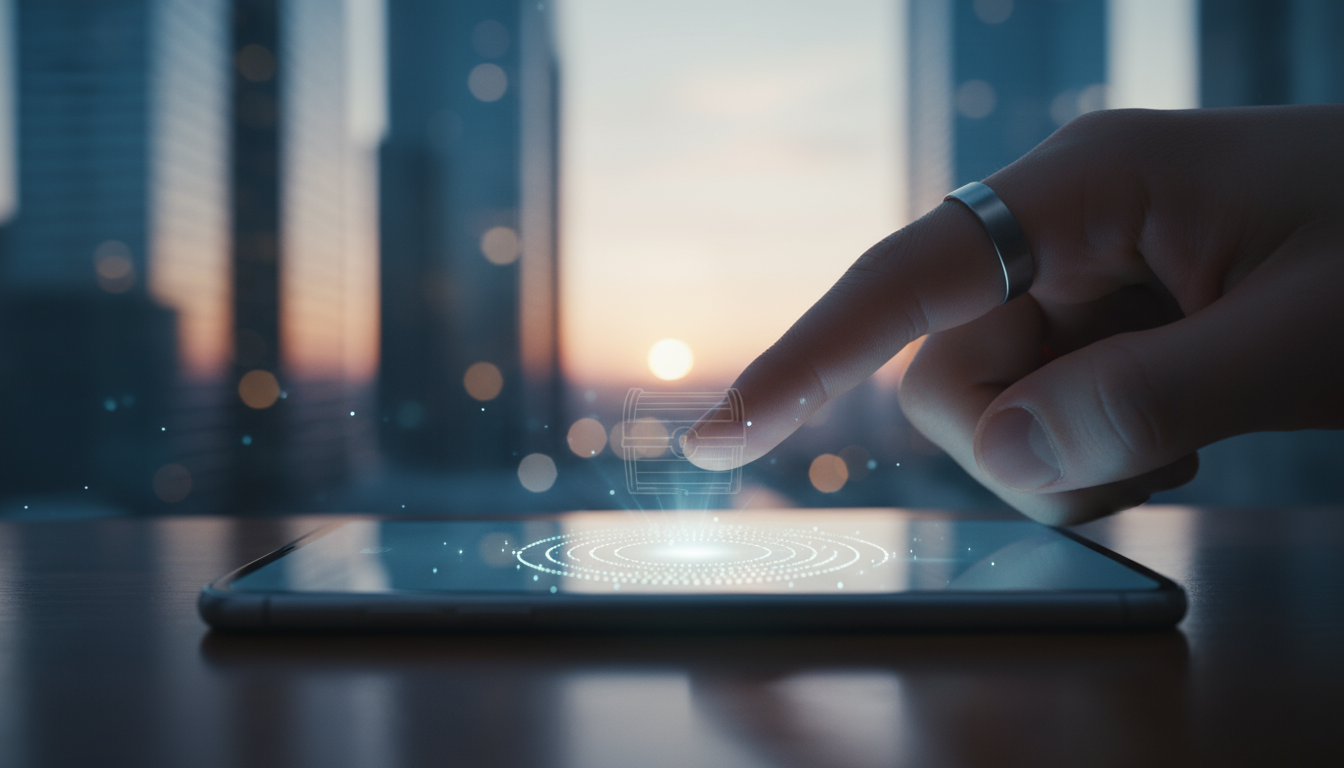
A Realistic “Low-Tech” Weekend
The idea of a full “digital detox” can feel impossible for many. A “low-tech” weekend is a more achievable alternative. The goal isn’t to eliminate technology but to use it with deliberate intention, transforming it back into a tool rather than a source of passive entertainment or anxiety.
Friday Evening: Prepare for the weekend. Delete the one or two social media apps you use most. You can always reinstall them on Monday. Let close friends or family know you might be slower to respond to texts, managing their expectations.
Saturday: Plan an activity that is difficult to do while looking at a phone. This could be a hike, a bike ride, cooking a new recipe, or visiting a museum. If you need your phone for navigation, get the directions started and then put it away. For communication, try scheduling a specific time to make a phone call to a friend instead of relying on sporadic texting.
Sunday: Dedicate a portion of the day to a hobby that uses your hands, such as gardening, painting, playing an instrument, or working on a puzzle. In the evening, allow yourself a specific block of time (e.g., 30 minutes) to catch up on anything important you might have missed online. Use this time purposefully, then put the device away again and enjoy your evening wind-down routine.
This approach helps you realize that you’re not actually missing much, which reduces the fear of being disconnected and makes it easier to maintain healthier boundaries during the week.
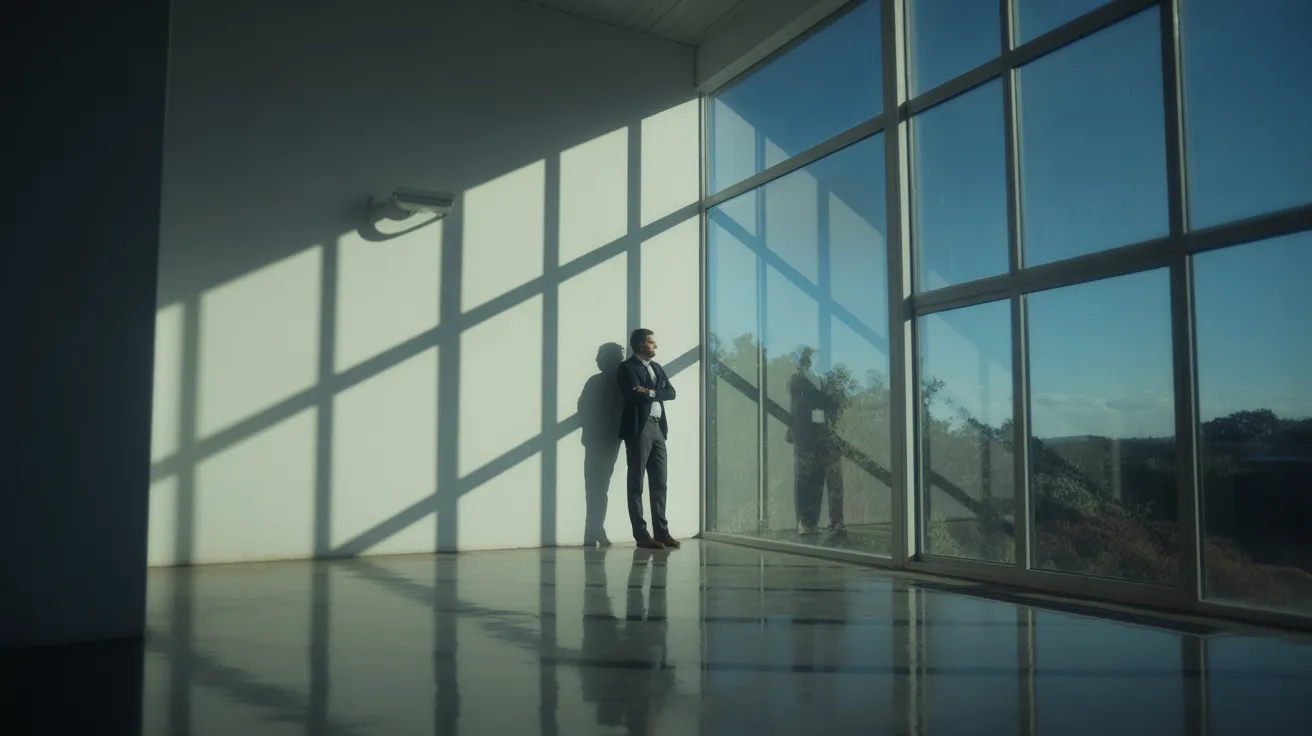
Navigating the Challenges: Troubleshooting Your Journey
Embarking on a path to healthier digital habits is a process, not a one-time fix. Along the way, you’ll likely encounter challenges, from internal anxieties to external pressures. Acknowledging these hurdles and having a plan to navigate them is crucial for long-term success.
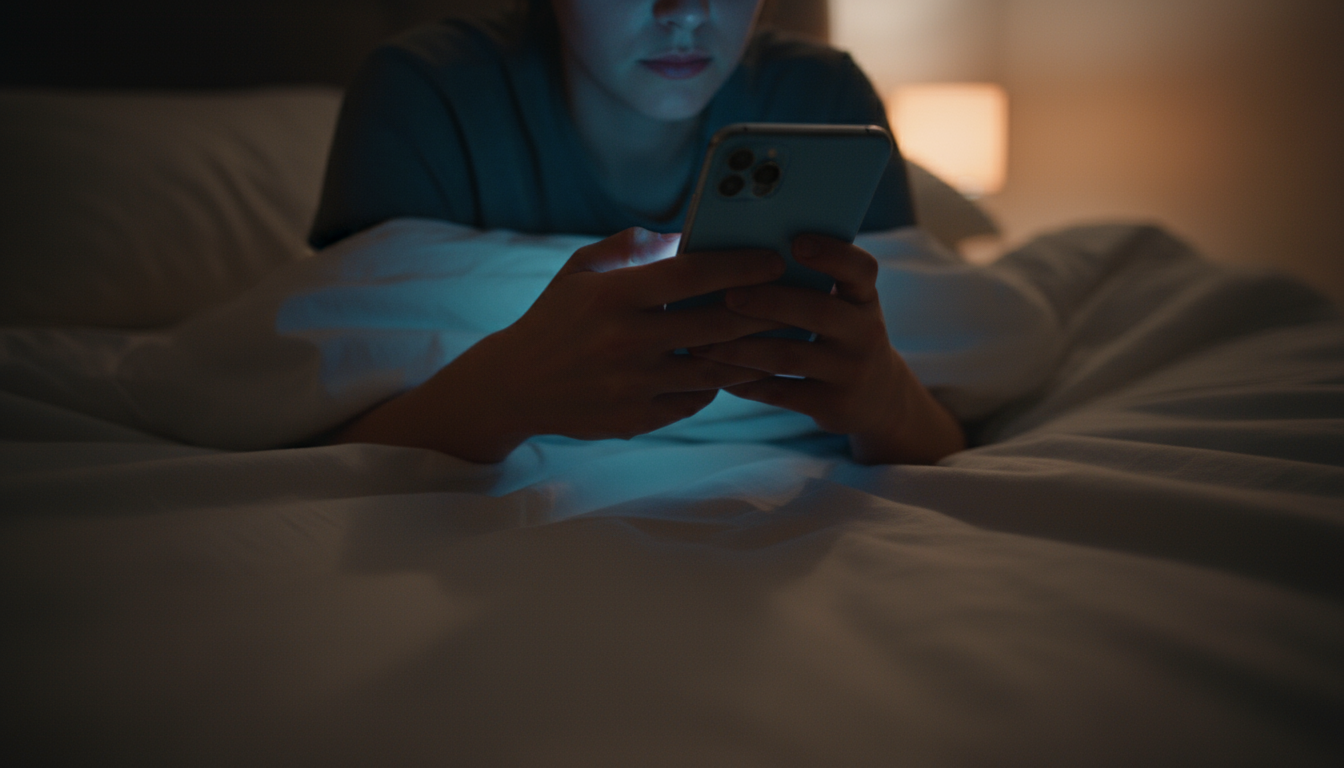
Handling FOMO and Social Pressure
One of the biggest psychological barriers to disconnecting is the Fear of Missing Out (FOMO). This anxiety is fueled by social media platforms that showcase a constant stream of what others are doing. When you step back, you might worry about falling behind on news, inside jokes, or social events.
The first step is to reframe it. Instead of FOMO, embrace JOMO—the Joy of Missing Out. Celebrate the peace and presence you gain by not being tethered to every update. Remind yourself that what you see online is a curated highlight reel, not the full picture of reality. The deep focus or genuine connection you experience in your offline moments is far more valuable than the passive consumption of someone else’s life.
Social pressure can also be a challenge. Friends or colleagues might expect instant replies. It’s helpful to communicate your new boundaries clearly and kindly. A simple message like, “I’m trying to be more present, so I’m only checking my messages a few times a day. If it’s urgent, please call me,” can set expectations and often inspires others to consider their own habits.

When You “Relapse”
There will be days when you fall back into old patterns. You might lose an hour to mindless scrolling or find yourself checking emails late at night. This is not a failure; it is a data point. The goal is not perfection, but progress.
When you have a “relapse,” approach it with curiosity, not judgment. Ask yourself: What triggered this? Was I feeling stressed, bored, or lonely? Understanding the underlying emotion that drove you to seek distraction is key. Perhaps you need to find a healthier coping mechanism for that feeling, like going for a short walk when you’re stressed instead of reaching for your phone.
Treat each slip-up as a learning opportunity. Every time you catch yourself falling into an old habit and consciously choose to redirect your attention, you are strengthening your “focus muscle.” Be compassionate with yourself and simply begin again.
Remember that building new habits is a marathon, not a sprint. Consistency over time is what creates lasting change. Each small victory—every notification ignored, every screen-free evening—contributes to a more balanced and fulfilling life in the digital age.
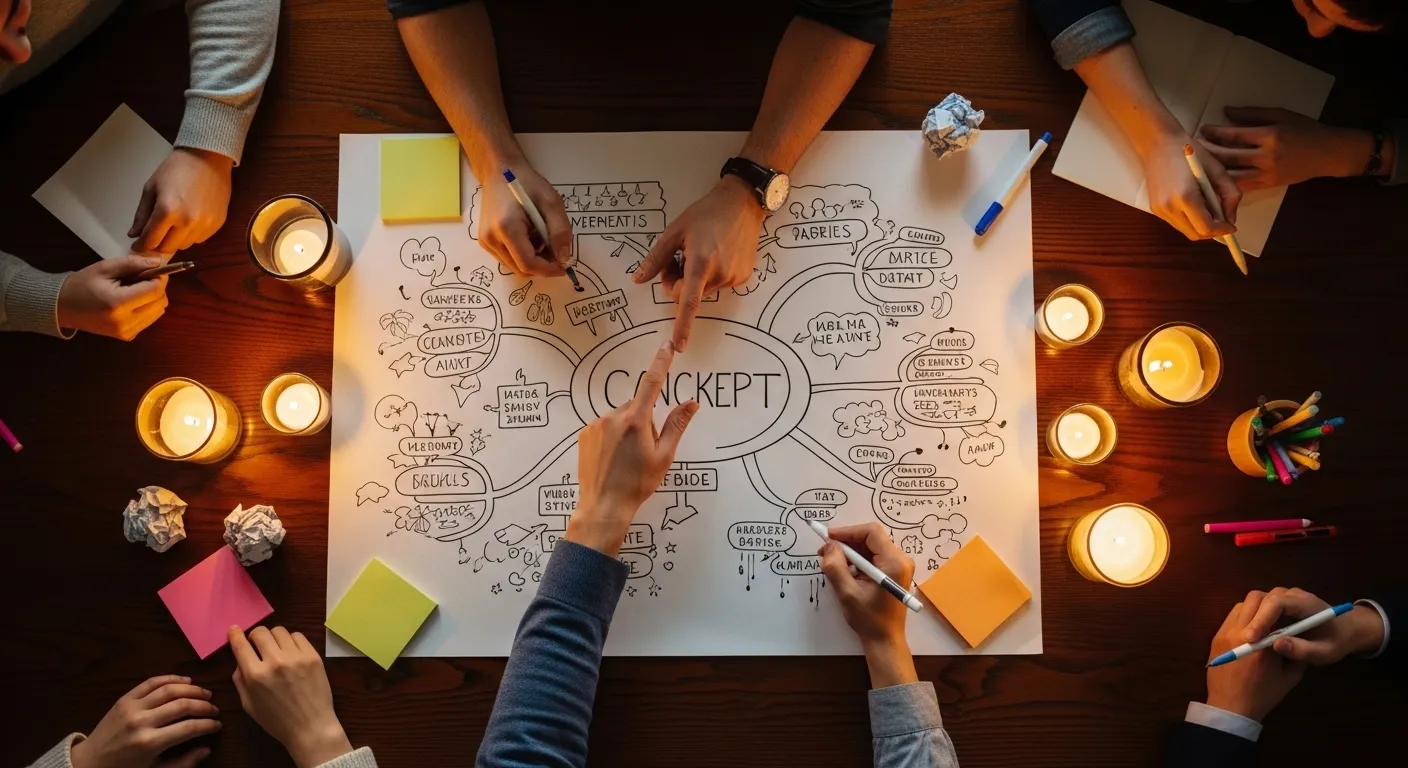
Frequently Asked Questions About Digital Burnout
Navigating the path to digital wellness can bring up specific questions related to individual circumstances. Here are answers to some common concerns about implementing these strategies in the real world.
How do I manage digital burnout when my job requires me to be online constantly?
This is a common and valid challenge. When your work is screen-based, the focus shifts from reducing screen time to improving the quality of that time. The key is to create firm boundaries between “work screen time” and “leisure screen time.” Use techniques like the Pomodoro method (25 minutes of focused work followed by a 5-minute break away from your screen) to prevent eye strain and mental fatigue. Be militant about your non-work hours; avoid checking work email or messaging apps after your workday is officially over. Use separate devices or user profiles for work and personal life if possible. The goal is to signal to your brain when the workday is truly done.
Are parental controls a good way to prevent tech fatigue in children and teens?
Parental controls can be a useful tool for setting guardrails, especially for younger children. They can help enforce time limits and restrict access to inappropriate content. However, they are most effective when used as part of a broader conversation about digital wellness. For teens, a collaborative approach often works better than a purely restrictive one. Talk to them about the science of attention, the symptoms of tech fatigue, and work together to set boundaries that feel fair. Modeling healthy digital habits yourself is one of the most powerful things you can do.
I work night shifts. How can I manage blue light and digital wellness around an unconventional schedule?
For night shift workers, managing light exposure is critical. The principles remain the same, but the timing is inverted. Your “digital sunset” should occur 60-90 minutes before your designated sleep time, even if that’s in the middle of the morning. Invest in blackout curtains to create a dark sleeping environment. When you are using screens during your “night,” consider using blue-light-filtering glasses or apps that warm the color temperature of your screen. The goal is to align your light exposure with your desired sleep-wake cycle as much as possible to support melatonin production.
What about privacy concerns with apps designed to track screen time?
This is a legitimate concern. Many people are wary of third-party apps that monitor their phone usage. The good news is that most modern smartphones (both iOS and Android) have robust, native screen time tracking features built directly into the operating system. These tools, like Apple’s “Screen Time” or Google’s “Digital Wellbeing,” are developed by the platform creators and are generally more secure and privacy-focused than external apps. They provide detailed reports on your usage without sending your data to a third party, giving you valuable insights while protecting your privacy.
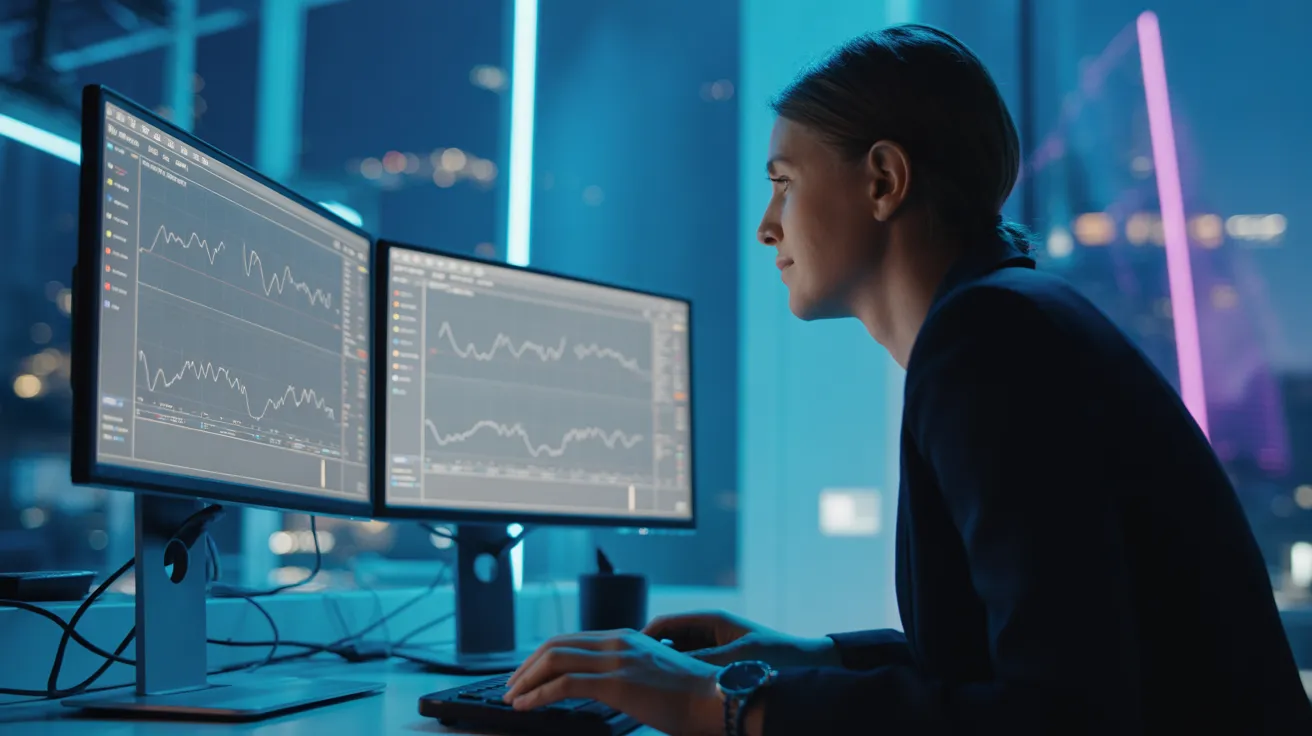
Your First Steps Toward a Healthier Tech Life
We’ve covered the science, the strategies, and the solutions for overcoming digital burnout. The journey from tech fatigue to digital wellness can feel daunting, but it starts with small, intentional steps. It’s not about a dramatic overhaul overnight. It’s about making a few conscious choices that, over time, compound into a healthier and more focused life.
Don’t try to do everything at once. Instead, pick one or two of the following ideas to implement this week. See how it feels. Notice the small shifts in your energy and attention. Building momentum is key.
Here are a few simple changes you can adopt this week:
* Create a “Digital Sunset.” Choose a time—perhaps 9 PM—and commit to putting all screens away until the next morning. Read a book, listen to a podcast, or just relax.
* Clean Your Home Screen. Take 10 minutes to move your most distracting apps off your main home screen and into a folder on another page. Make your phone a tool, not a temptation.
* Turn Off Non-Human Notifications. Go into your settings and disable notifications for every app that isn’t used for direct communication with another person. Reclaim your attention from automated alerts.
* Practice “Single-Tasking.” The next time you sit down to watch a show or listen to music, do just that. Resist the urge to scroll through your phone at the same time. Allow your brain to focus on one thing.
Your relationship with technology is just that—a relationship. It requires attention, intention, and regular maintenance. By implementing these strategies, you are not rejecting technology; you are redefining the terms of your engagement. You are choosing to be the master of your tools, not the other way around. You are taking the first, most important step toward a life with more focus, presence, and peace.
Disclaimer: The information provided in this article is for informational purposes only and is not intended to be a substitute for professional medical advice, diagnosis, or treatment. Always seek the advice of your physician or other qualified health provider with any questions you may have regarding a medical condition.






